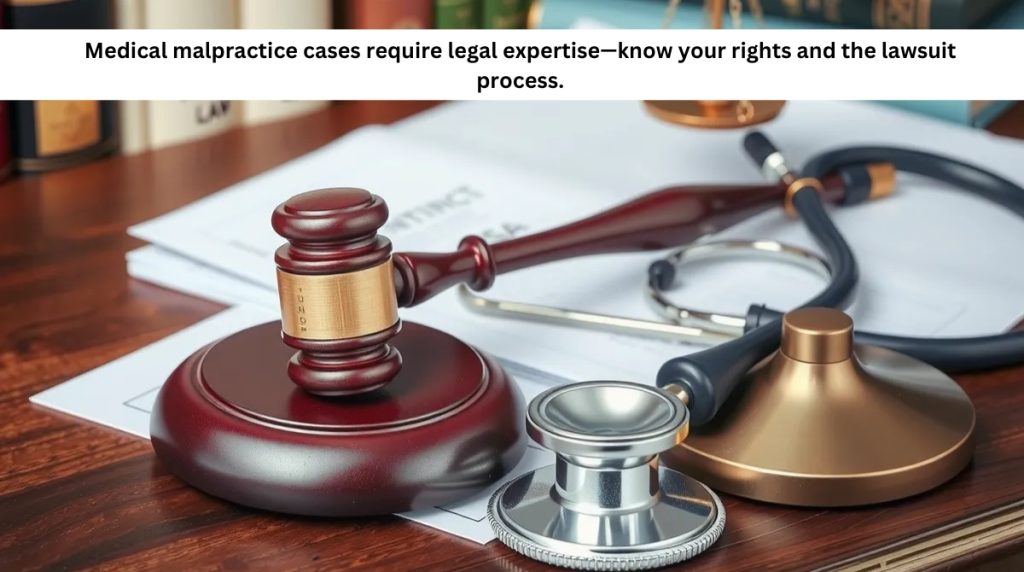
Medical malpractice is a legal issue that falls under the broader category of personal injury law. However, not all personal injury cases involve medical malpractice. In this guide, we will explore the key differences, types of malpractice claims, how to file a lawsuit, and the compensation available to victims. We will also provide insights from legal experts and recent case examples to help you understand the process better. Additionally, we will discuss common challenges victims face, the role of insurance companies in malpractice cases, and steps to take if a lawsuit is denied or dismissed.
Understanding the Difference: Medical Malpractice vs. Personal Injury
Personal Injury Lawsuits

Personal injury lawsuits are legal disputes that arise when one person suffers harm due to the negligence or wrongful conduct of another party. These lawsuits can include:
- Car accidents
- Slip and fall incidents
- Product liability
- Workplace injuries
- Dog bites
Medical Malpractice Lawsuits
Medical malpractice, on the other hand, specifically involves healthcare providers who fail to meet the standard of care expected in their profession, leading to injury or harm to a patient. It differs from general personal injury claims in the following ways:
- Requires proof of medical negligence
- Often involves expert testimony from medical professionals
- Adheres to specific legal and procedural rules
- Requires affidavits of merit in some states
- Typically has shorter statutes of limitations than general personal injury cases
Both medical malpractice and personal injury lawsuits aim to recover compensation for victims, but medical malpractice cases tend to be more complex and difficult to prove.
Types of Medical Malpractice Claims
Medical malpractice claims come in various forms, including but not limited to:
1. Misdiagnosis or Delayed Diagnosis
- A doctor fails to diagnose a condition or delays a diagnosis, leading to harm or worsened medical conditions.
- Example: A cancer diagnosis that comes too late, reducing treatment options and survival chances.
2. Surgical Errors
- Errors during surgery, including wrong-site surgery, leaving foreign objects inside the patient, or unnecessary procedures.
- Example: A surgeon operates on the wrong leg, leading to permanent disability and the need for further corrective procedures.
3. Medication Errors
- Prescribing the wrong medication, incorrect dosage, or failure to recognize harmful drug interactions.
- Example: A patient is given a medication they are allergic to, leading to severe complications and hospitalization.
4. Birth Injuries
- Negligence during childbirth leading to injuries to the baby or mother, such as cerebral palsy due to lack of oxygen.
- Example: Failure to perform an emergency C-section resulting in long-term disabilities.
5. Anesthesia Errors
- Administering too much or too little anesthesia, leading to severe complications, brain damage, or death.
- Example: A patient wakes up during surgery due to insufficient anesthesia, experiencing extreme pain and trauma.
6. Failure to Obtain Informed Consent
- A doctor performs a procedure without adequately informing the patient of the risks involved.
- Example: A patient undergoes surgery without being told of potential side effects and later suffers unexpected complications.
7. Hospital-Acquired Infections
- Patients develop serious infections due to unclean hospital conditions or negligence in post-operative care.
- Example: A patient contracts a severe bacterial infection after a routine surgery due to unsanitary conditions in the operating room.
8. Negligent Post-Treatment Care
- Failing to provide appropriate follow-up care, monitoring, or discharge instructions, leading to further harm.
- Example: A patient is discharged too early after surgery without adequate aftercare instructions, resulting in complications.
How to File a Medical Malpractice Lawsuit
Filing a medical malpractice lawsuit involves several steps. Here’s a detailed breakdown of the process:
Step 1: Determine If You Have a Case
To prove medical malpractice, you must establish:
- A doctor-patient relationship existed.
- The doctor or medical professional breached the duty of care.
- The negligence caused harm or injury.
- You suffered damages, such as medical bills, lost wages, emotional distress, or permanent disability.
Step 2: Consult a Medical Malpractice Attorney
- An attorney specializing in medical malpractice can evaluate your case and guide you through the legal process.
- Many attorneys offer free initial consultations and work on a contingency fee basis.
Step 3: Gather Evidence
- Obtain medical records, prescriptions, and bills.
- Collect witness statements from nurses, hospital staff, or other doctors.
- Secure expert testimony from another medical professional who can confirm the negligence.
Step 4: File a Notice of Intent
- Some states require a formal notice of intent to sue before filing a lawsuit.
- This allows the healthcare provider to respond or attempt a settlement.
Step 5: File the Lawsuit
- Your attorney will file the official complaint in court, outlining the details of your case.
- The defendant (doctor, hospital, or clinic) will have time to respond.
Step 6: Discovery Phase
- Both sides exchange evidence, take depositions, and question witnesses.
- This process can take months or even years.
Step 7: Settlement Negotiations or Trial
- Many medical malpractice cases are settled out of court.
- If no settlement is reached, the case goes to trial, where a judge or jury will decide the outcome.
Compensation in Medical Malpractice Cases
If you win a medical malpractice lawsuit, you may be entitled to various forms of compensation, including:
1. Economic Damages
- Medical expenses (current and future bills)
- Lost wages due to inability to work
- Rehabilitation costs (physical therapy, counseling, etc.)
2. Non-Economic Damages
- Pain and suffering
- Emotional distress
- Loss of enjoyment of life
3. Punitive Damages
- Awarded in cases of gross negligence or intentional harm.
- Designed to punish the negligent party and prevent future misconduct.
Final Thoughts
Medical malpractice is a subset of personal injury law, but it has unique challenges and requirements. If you believe you have been a victim of medical negligence, consulting a qualified medical malpractice attorney is crucial.
Understanding your rights, the legal process, and potential compensation can help you make informed decisions. Whether through settlement or trial, holding negligent healthcare providers accountable is essential for justice and patient safety. Additionally, being proactive in seeking legal assistance can make a significant difference in ensuring a fair outcome for malpractice victims.